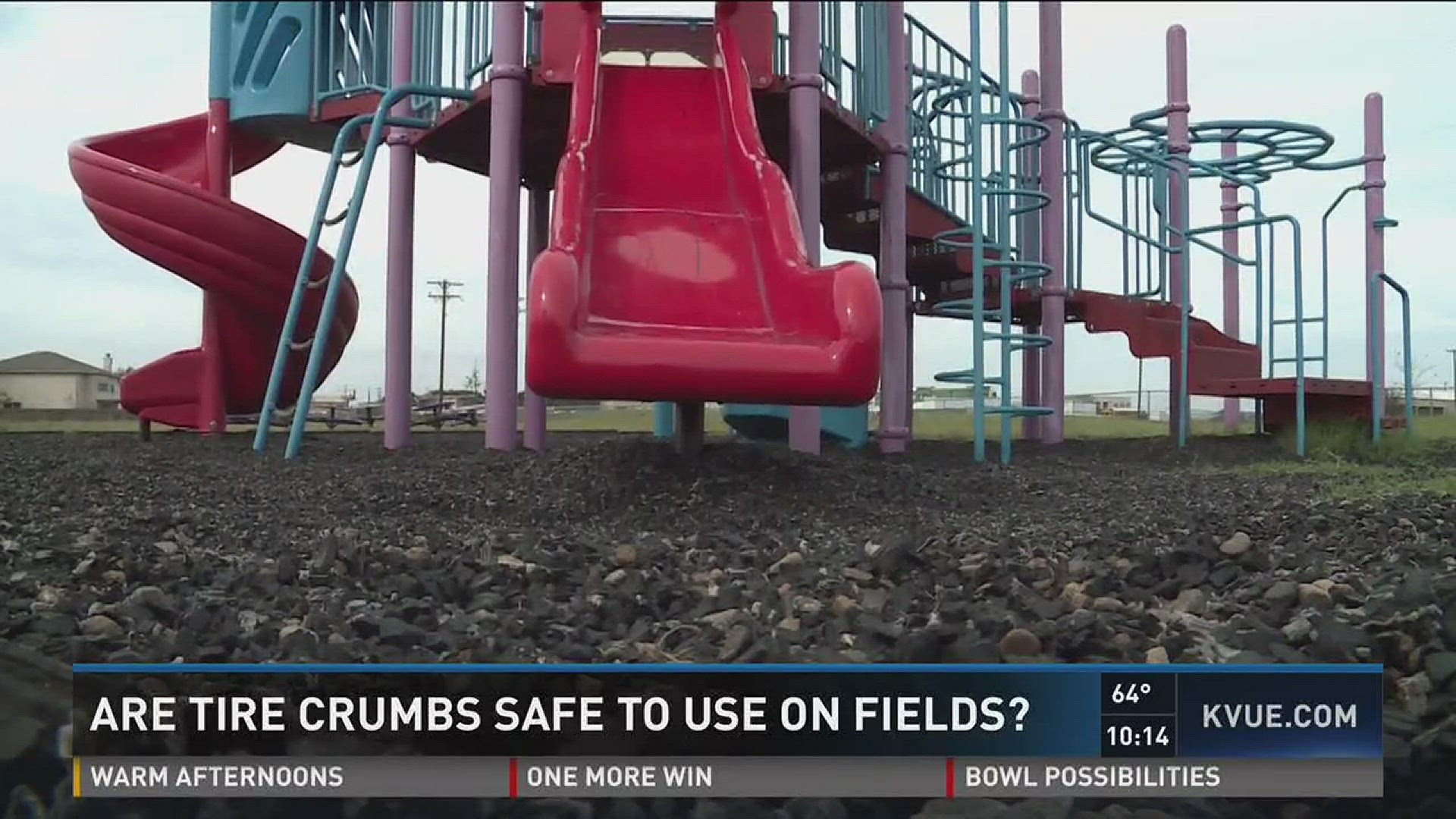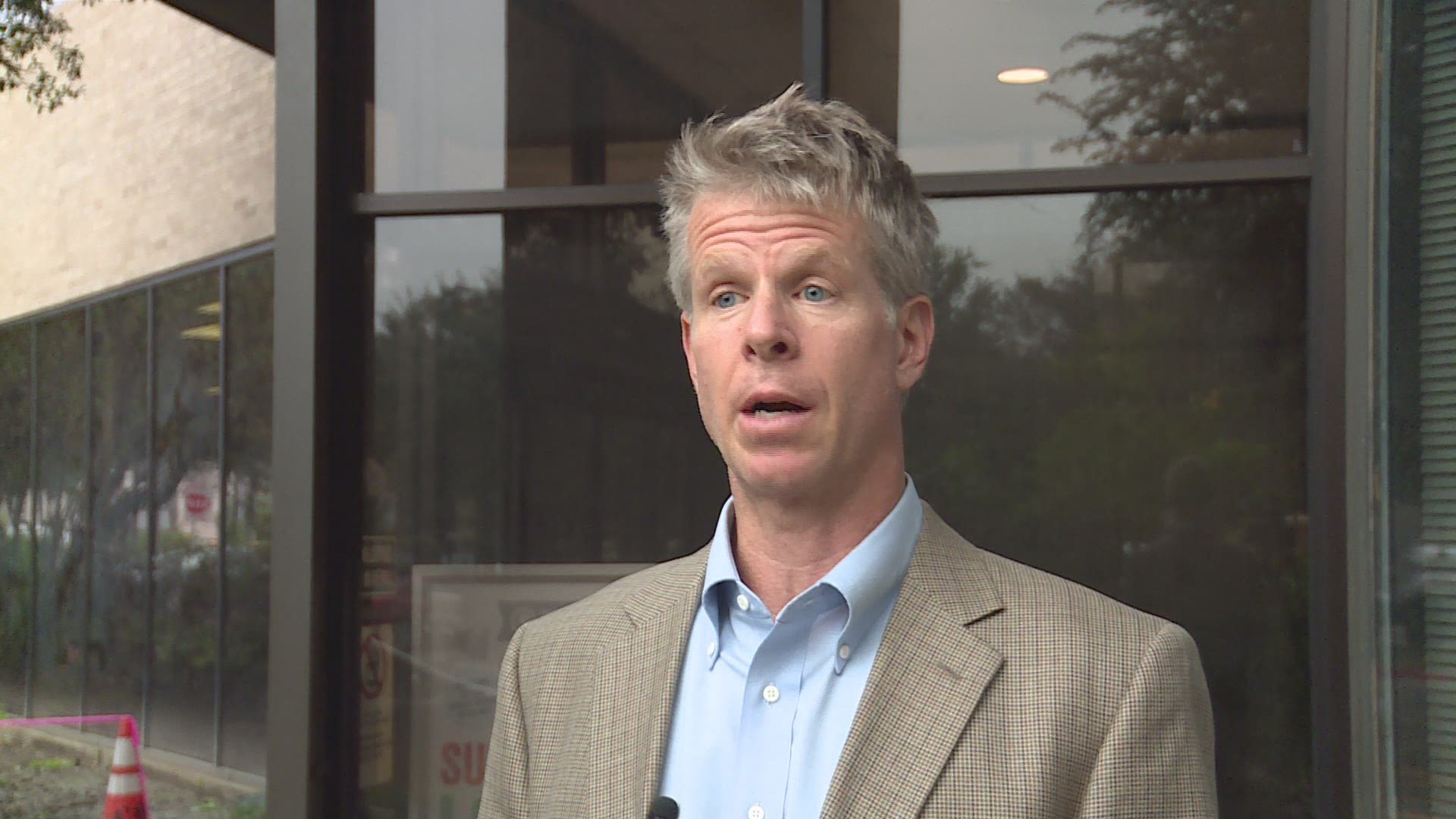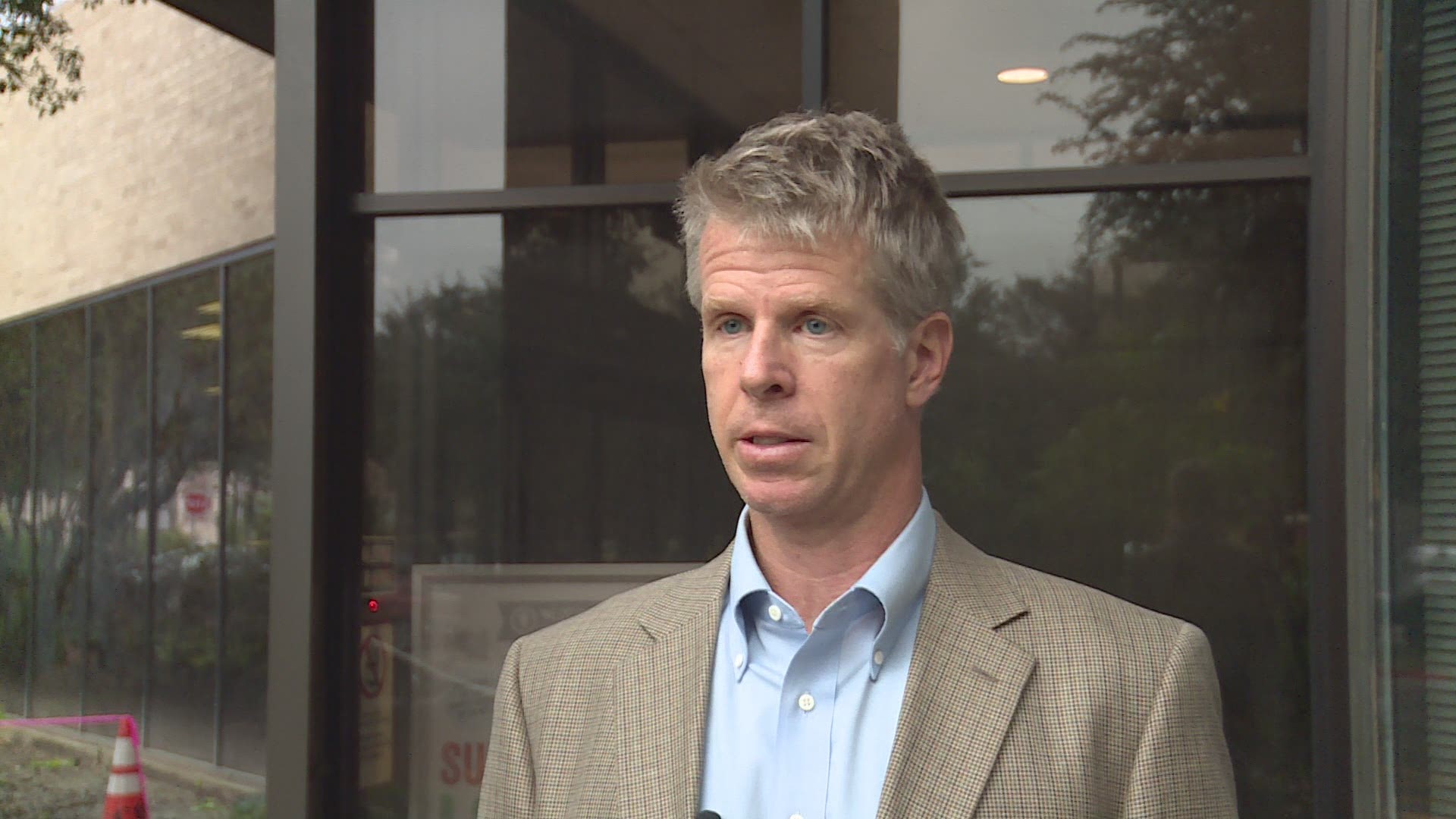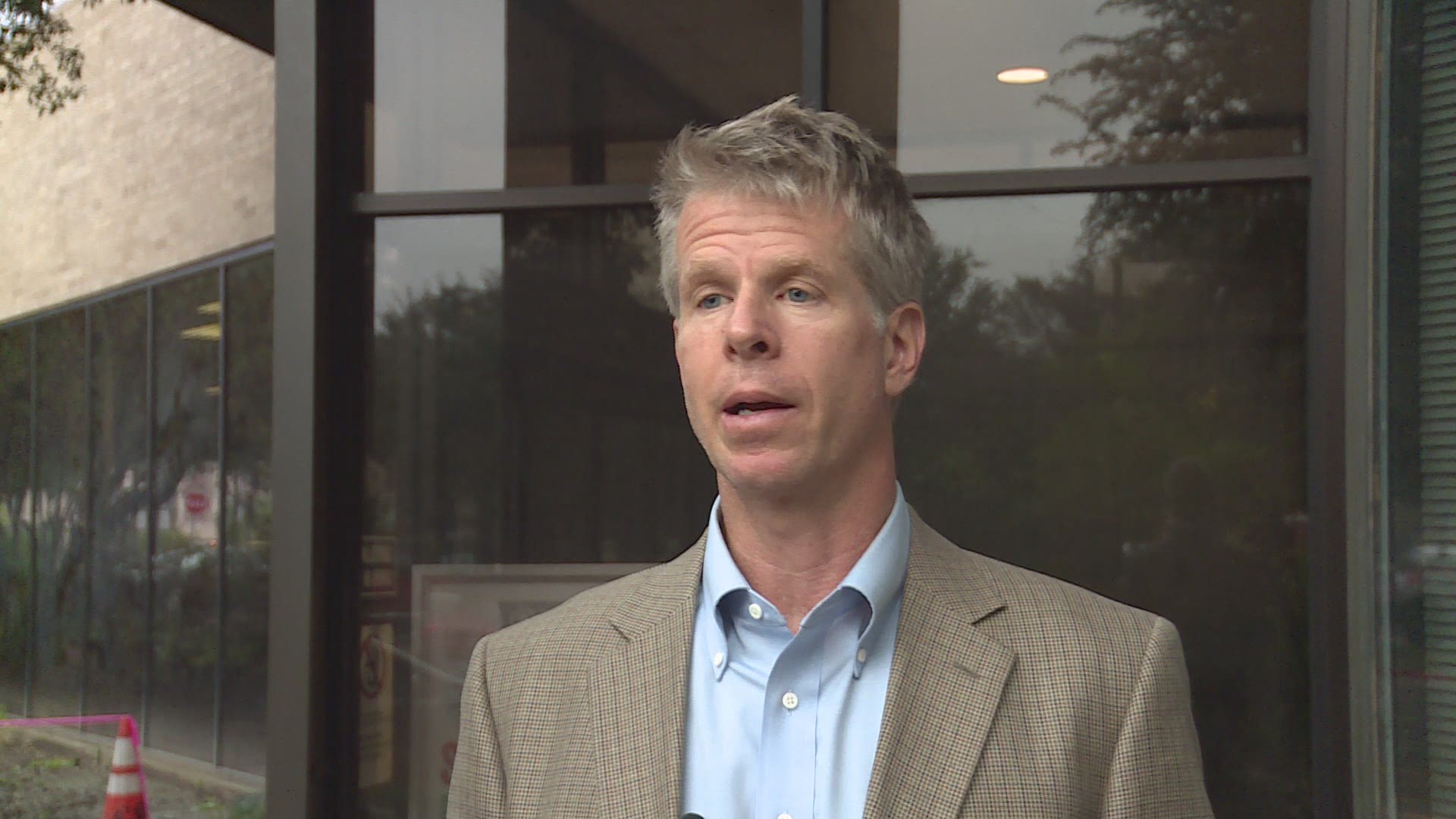We’re days away from learning if a rubber material used on playgrounds and athletic fields are safe for children.
Three federal agencies are researching the health risks of rubber tire crumb. Their research began in early 2016, and they’re expected to release a report soon.
The work began as a solution to a problem; old tires can't go in landfills because they are not biodegradable. So, companies began shredding them and putting them on playgrounds and artificial fields to prevent injury.
Zac Trahan and Virginia Fugman say they take their 1-year-old son Dario to explore the park.
"We go outside every day," said Fugman.
But Trahan and Fugman say they're are concerned about the dangers of rubber crumb used to pad their son's fall at some parks.
"There's no way I'm going to take him to a playscape or playground that has rubber just because I don't know," said Fugman.
It's the same worries parents across the country have about the rubber crumb used in synthetic turf fields under the Friday night lights.
Nancy Alderman, the president of Environment and Human Health Inc., a nonprofit based in Connecticut, said their group of physicians, toxicologists, and public health professionals has been researching tire crumbs for nine years.
"The reason we researched it is because nobody else was, and because we felt there was an inherent danger," said Alderman.
A Yale University analysis, commissioned by EHHI, found 11 carcinogens, or cancer-causing substances, and 20 irritants in a small rubber crumb sample. The findings present a potential danger for students athletes who come in close contact with it.
"These crumb rubber are small enough they get into ears, eyes, nose, mouths, clothes, they get into people houses on their clothes, they get into the washing machines," said Alderman. "Why would anybody want to put our children on any surface that have known carcinogens on it, why do we do this?"
Currently, three federal agencies, the Environmental Protection Agency, Consumer Product Safety Commission and Center for Disease Control and Prevention, are studying the issue. They're looking at 40 fields and nine tire crumb manufacturing plants across the country to determine if there are potential health risks in the material.
A spokeswoman for the EPA says almost 50 federal employees are working on the project and it's estimated to cost about $2 million dollars.
But people like Trahan, who is also the program director at Texas Campaign for the environment, are asking why the government didn't do their study before tire crumbs were used on playgrounds and turf soccer fields.
"Only after evidence starts coming to light that it may be dangerous do we actually study it to see if it’s safe, it doesn't make any sense at all," said Trahan. “If it turns out the study shows that this stuff is completely 100 percent safe, then you can start using it again, but why have it there in the meantime."
The Recycled Rubber Council sent KVUE the following statement:
We strongly reaffirm, however, that based on dozens of reports, including peer-reviewed academic studies and federal and state government analyses—recycled rubber has no link to any health issues. The product in media reports is the same recycled rubber used in a variety of products that are widely considered to be safe, such as sneakers, garden hoses, hospital floors, surgical gloves, and an array of other uses.
In an ideal world the federal government’s involvement, which we encouraged for years, would settle this matter once and for all, put parents’ minds at ease, and validate past and recent due diligence by public officials. At the same time, we have some concern that because of the way the study is currently designed, it may not provide the level of closure to the issue that the public is seeking.
First, the EPA stated the study will not investigate natural grass fields, which would provide critical context given the EPA’s note that metals of concern within fields containing recycled rubber are likely to be present in natural grass fields, too. Secondly, the EPA will not be testing a control group by looking at the grass and soil adjacent to synthetic turf fields being studied to see if any possible contamination derives instead from environmental factors.
When the findings of this study are reported, it would be misleading to report the existence of chemicals without including this necessary context. The EPA has acknowledged a desire to investigate each ofthese, but cited time and resource constraints. We hope to see this revisited, as such context lends to sound science and sensible policies to instill the confidence policymakers sought with this study.”Here in Central Texas, you can find pieces of the rubber at Fuentes Elementary in Kyle. Tim Savoy with Hays CISD said the district tried it out on 5 playgrounds in 2010 in order to go green.
"It has great properties in terms of being safe when a kid falls because it's very cushy; it will stop a fall," said Savoy.
But, they're now phasing the rubber crumb out.
"We just made the decision that it's not the material that we want to use," said Savoy.
He said the main reason is because the pieces blow away, and it's hard to maintain. But he also said they want to be proactive, in case the research finds health risks in the rubber.
"You start seeing the concerns that are raised, is it harmful, are there chemicals in those tires that are not good for children," said Savoy.
The change will cost about $6,000 dollars, but Savoy said it’s well worth it.
"For the peace of mind, that's worth the price," said Savoy.
We talked to several other school districts in Central Texas who say they use a virgin rubber mix on their fields and playgrounds.
A spokeswoman with Hellas Construction based in Austin said that mix is made of new rubber, not old tires. In 2013, Frank Petrini with Hellas Construction said they also created an alternative.
"There’s cork in it, and the cork allows for a bit more cushioning," said Petrini.
Petrini said the Geo Plus infill, made of coconut and cork, is an organic alternative that helps keep fields 40 degrees cooler than the rubber fill.
"The biggest complaints of artificial turf is that they're super-hot," said Petrini.
While the company does still install rubber, Petrini said the organic option has taken off. For 2016, he said the organic mix will be more than 20 percent of their sales, 3 years ago it was less than 5 percent.
"You don't get rubber splashed everywhere, in your uniforms, in your car, at your house, it's a much more natural type product so it feels like natural grass," said Petrini.
But he said they're not convinced the rubber is harmful.
"There's multiple tests done on rubber, it's always been inconclusive, as far as health standards on it," said Petrini.
Until the federal study is complete, Trahan and Fugman feel it's up to parents.
"It's definitely going to impact where we go in the future," said Fugman.
A decision that may impact the future of their son.
KVUE talked to several school districts in Central Texas to find out which products schools are using. So far we've counted 34 fields that use a rubber infill, either the cut up tires, or the clean rubber mix.
Mike Kelly, the Managing engineer for the City of Austin says they have regulations to make sure products like these tire crumb pieces don’t get into the water stream.
Kelly said people are free to still use the material, but they require a system to help filter it.
Despite the concerns of water pollution, Kelly said it would take a really high exposure to feel effects from the rubber pieces.




